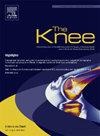SPECT-CT may aid in determining which side of a revision stemmed implant problematic total knee replacement is loose when planning revision surgery
IF 1.6
4区 医学
Q3 ORTHOPEDICS
引用次数: 0
Abstract
Aim
To evaluate SPECT-CT in the diagnosis of single component aseptic loosening in patients with a problematic cemented stemmed TKR (Total Knee Replacement).
Methods
SPECT-CT was performed where aseptic loosening was suspected but was not clear on plain radiography. Demographics, suspected diagnosis and intention to revise were collected prospectively before and after SPECT-CT.
Results
30 patients were investigated. 43% (95% CI: 0.5–0.9) had clear evidence of loosening on SPECT-CT. In 23% (95% CI: 0.1–0.4) intention to perform revision surgery following SPECT-CT changed (7/30) (p = 0.0004, standard error = 42.1, z = 3.5).
Intentions to perform revision surgery according to the radiologist’s overall summary were:
Normal SPECT-CT – 0% (95% CI: 0.0–0.8) intention to revise (0/2).
Possibly abnormal SPECT-CT – 13% (95% CI: 0.0–0.4) intention to revise (2/15).
Definitely abnormal SPECT-CT – 77% (95% CI: 0.5–0.9) intention to revise (10/13).
We report that SPECT-CT had a test sensitivity of 90.9% (95% CI: 0.6–1.0), a specificity of 100% (95% CI: 0.9–1.0), a positive predictive value of 100% and a negative predictive value of 97.7%.
In 70% (95% CI: 0.3–0.9) of cases where revision surgery was performed for aseptic loosening SPECT-CT provided information that guided pre-operative planning with regards single component or both component revision surgery (7/10).
CONCLUSION
When positive SPECT-CT was useful in determining single component revision. A normal SPECT-CT may have a negative predictive value; however, overall half of our series had a possibly abnormal or equivocal investigation.
在计划翻修手术时,SPECT-CT 可帮助确定翻修干式植入物问题全膝关节置换术哪一侧松动
目的评估SPECT-CT在诊断有问题的骨水泥柄全膝关节置换术(TKR)患者单个组件无菌性松动中的作用。在 SPECT-CT 前后,前瞻性地收集了患者的人口统计学资料、疑似诊断和复查意向。43%(95% CI:0.5-0.9)的患者在 SPECT-CT 上有明确的松动证据。23%(95% CI:0.1-0.4)的患者(7/30)在SPECT-CT检查后进行翻修手术的意向发生了变化(p = 0.0004,标准误差 = 42.1,z = 3.5)。根据放射科医生的总体总结,进行翻修手术的意向为:SPECT-CT检查正常 - 0%(95% CI:0.SPECT-CT可能异常--13%(95% CI:0.0-0.4)有修改意向(2/15).SPECT-CT肯定异常--77%(95% CI:0.5-0.9)有修改意向(10/13)。我们报告称,SPECT-CT 的检测灵敏度为 90.9%(95% CI:0.6-1.0),特异性为 100%(95% CI:0.9-1.0),阳性预测值为 100%,阴性预测值为 97.7%。在70%(95% CI:0.3-0.9)因无菌性松动而进行翻修手术的病例中,SPECT-CT提供的信息可指导单个组件或两个组件翻修手术的术前计划(7/10)。正常的SPECT-CT可能具有阴性预测价值;但是,在我们的系列研究中,有一半的研究结果可能异常或不明确。
本文章由计算机程序翻译,如有差异,请以英文原文为准。
求助全文
约1分钟内获得全文
求助全文
来源期刊

Knee
医学-外科
CiteScore
3.80
自引率
5.30%
发文量
171
审稿时长
6 months
期刊介绍:
The Knee is an international journal publishing studies on the clinical treatment and fundamental biomechanical characteristics of this joint. The aim of the journal is to provide a vehicle relevant to surgeons, biomedical engineers, imaging specialists, materials scientists, rehabilitation personnel and all those with an interest in the knee.
The topics covered include, but are not limited to:
• Anatomy, physiology, morphology and biochemistry;
• Biomechanical studies;
• Advances in the development of prosthetic, orthotic and augmentation devices;
• Imaging and diagnostic techniques;
• Pathology;
• Trauma;
• Surgery;
• Rehabilitation.
 求助内容:
求助内容: 应助结果提醒方式:
应助结果提醒方式:


